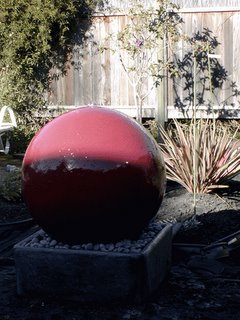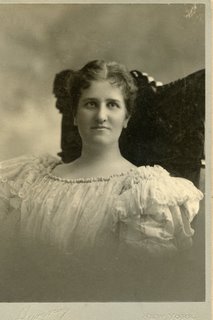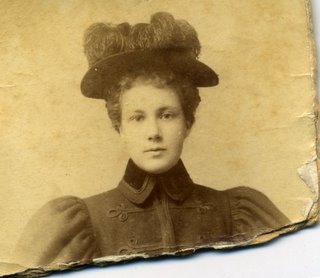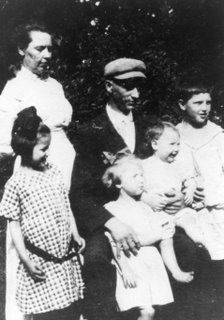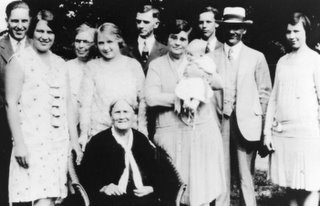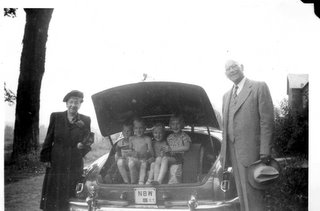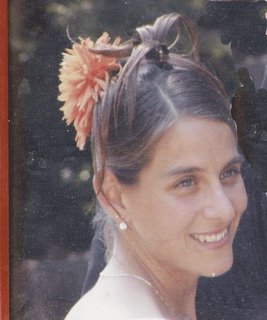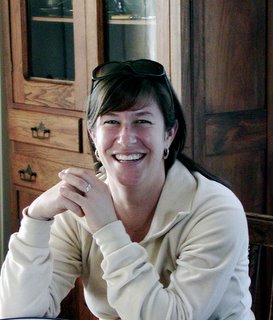My Grandfather, Thomas A. Howell, died before I was born, so I never knew him. He graduated from Yale in 1900, and his college roommate was Charles Tiffany, brother of the glass maker Louis Tiffany. Grandfather owned sugar plantations in the Dominican Republic, Cuba, and Haiti. The company's American name was the West Indies Sugar Company, and it was a huge, multi-million dollar operation during the early part of the 1900's. He also had a large financial company in New York, and worked closely with a number of banks to obtain almost unlimited capital for his sugar operations. When his two sons, Hunt and Tom (my father) graduated from Yale, they took on a much larger role in the business in the late 1920's. Hunt stayed in New York and ran the financial and marketing end of the business. Tom went to the Dominican Republic, where he oversaw the operations on the plantations - planting, harvesting, packing, shipping, and overseeing a large labor force. During these years, Tom and Hunt were in their mid-20's. Our grandfather, TAH, was suffering from illness, and had to withdraw from the business as the illness progressed. In fact he died of tuberculosis after spending the last couple of years of his life in a sanitarium in upstate New York. The sugar business went through great financial stress during the 1920's, the years of the Great Depression. The price of sugar dropped dramatically, just at the time when the company had decided to invest in larger land holdings. Political changes on the islands also forced the nationalization of the land and the family lost ownership. A book called "Sugar" by Edson (?) tells a lot of the story, as do a collection of letters that our family has. I have few photos of TAH, but this one has always been a favorite. It shows my Grandfather at the wheel of his car in October, 1906, just returned from a bird-hunting trip with his dog and some other men. The car has birds hanging all over it and on the back it says "17 partridge, 33 woodcock". A good day for hunters, a bad day for birds!

My grandmother, Helen Akin Howell, stayed behind when her husband was in the Caribbean running the sugar business. The family had homes in Connecticut (Winsted), in Southampton, L.I., and in New York City. The estate in Winsted was specifically intended to be a hunting preserve for the family, and the land went across the Connecticut border, into Massachusetts. Their children went back and forth between the locations, often staying with their father in their home in the Dominican Republic. When the financial hard times came, the Howells were forced to sell off Winsted and Southampton, as well as many of their possessions, to make payments on their huge debt and avoid bankruptcy.
Eventually, as I mentioned
in an earlier blog, my grandfather fell in love with his children's Spanish governess, whom he had hired for when he and the children were in the Dominican Republic. Her name was Emelia de Apezteguia, and she was called "Beth". She was the daughter of the late Marquis de Apezteguia of Spain, and the former Helen Vincent, daughter of Dr. Martin R. Vincent of the Union Theological Seminary. She married TAH on April 10, 1918, and was his constant and vibrant companion until his death in 1930.
Meanwhile, back home, my grandmother also fell in love with another man. In fact, she became pregnant by another man before my grandparents eventual divorce became final. In those days (around 1917) this was all a major scandal. My father used to tell me that when the divorce was in process, the children were taken to court and had to choose which parent they would live with. He cried every time he talked about it, even as an old man. I know that it was an emotionally devastating time for him and his siblings.
Both grandparents married their new lovers. Mr. Littell also died before I was born, but my grandmother had two children by him, my father's half-siblings, Elizabeth (Liz) and Emlen Littell. We saw my grandmother occasionally. By then she was living at Quaker Hill, New York, where she had grown up and her Quaker ancestors had founded the community. She was a dignified and somewhat gruff old woman, but beneath her gruffness she was very kind and generous. She was great friends with Edward R. Murrow and his wife Janet, who also lived at Quaker Hill. I remember her taking me to the first movie I ever saw, Peter Pan! Here are two photos, one of Helen, my grandmother, as a young woman, and one when she was older.

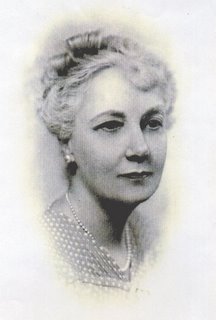
Beth (Emelia), my grandfather's Spanish second wife, after my grandfather died, also married again to Charles Tiffany, Grandfather's former college roommate! Charles Tiffany also died before I was born, but Beth Tiffany was very present in our lives growing up. She lived in New York, hobnobbed with the very rich, and made frequent visits to us on the farm in New Jersey. She always seemed to have a drink in one hand and a cigarette in a long holder in the other. She ate burnt toast, drank thick black coffee, and smoked like a chimney. We always thought she must be black inside! She also had a wry and dark sense of humor and a razor-sharp wit. Beth told hilarious and fanstastical stories, many of them made up, I believe, which delighted us children no end. Here are some photos of her, young and old! Her eccentricity and vibrant personality were some of the highlights of my childhood.


 In this shot, my son Phil and his wife Megan came over to help with the solar panels. Here they are working on installing them on the back fence. Thanks for the helping hand!
In this shot, my son Phil and his wife Megan came over to help with the solar panels. Here they are working on installing them on the back fence. Thanks for the helping hand!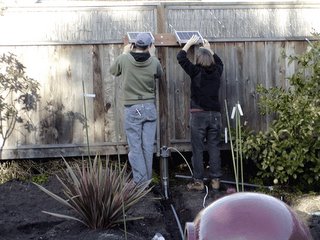 Next you see the system all set up and ready to go. We are waiting for some sun!
Next you see the system all set up and ready to go. We are waiting for some sun!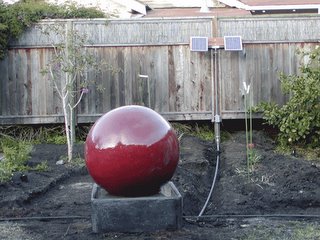 Finally, yippee! It works! This made my day and it makes a sparkling color spot in the back yard. Now for some new plants, pathways, etc.!
Finally, yippee! It works! This made my day and it makes a sparkling color spot in the back yard. Now for some new plants, pathways, etc.!